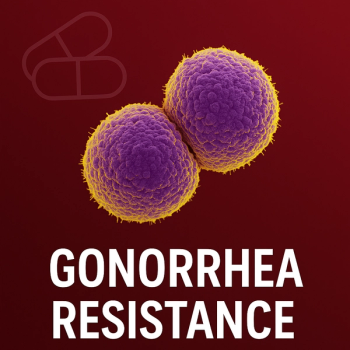
Top Infectious Disease News of the Week—September 2, 2018
Stay up-to-date on the latest infectious disease news by checking out our top 5 articles of the week.
#5: Missed Opportunities for PrEP Prescribing in High-Risk Populations
When pre-exposure prophylaxis (PrEP) is taken consistently, it has been shown to reduce the risk of HIV infection by up to 92%.
PrEP is recommended for individuals who are at a higher risk for HIV, including men who have sex with men (MSM) and drug users. However, a new survey conducted by investigators from the San Francisco Department of Public Health suggests that only 48% of health care providers had ever prescribed PrEP.
The results for the survey were presented last week at the US Centers for Disease Control and Prevention's 2018 National STD Prevention Conference, held in Washington, D.C.
Read more about
#4: Provider Attitudes Impact How Far Patients with HIV Are Willing to Travel for Care
A doctor’s bedside manner can have a significant impact on patient satisfaction, and now, the results of a recent study have revealed that it may also impact how far a patient is willing to travel for care. In fact, the study results indicate that patients with HIV are willing to wait at least 19 hours or travel up to 28 miles to see a “nice” provider. According to the study investigators, the implications of these results can go a long way toward helping address engaging patients with HIV and understanding what these patients want from their health services, particularly in resource-limited settings.
For the study, a total of 280 patients with HIV in Zambia who had been lost to follow-up (defined as >90 days overdue for their last scheduled appointment) were identified. After interviewing the participants, the investigators found several key considerations were common across the participants. These included: wait time at a clinic; the distance from their home to the clinic; whether or not antiretroviral therapy (ART) was provided; the hours of operation, and the attitudes of the staff.
Read more about how
#3: For Tick-Borne Diseases, The Future is Now: Public Health Watch
Tick, tick, tick.
For some, the phrase marks the passage of time. For public health specialists focused on vector-borne diseases, however, it portends the possibility of the crises that lay ahead. Indeed, although mosquito-borne diseases such as Zika virus and Dengue Fever have generated most of the headlines in recent years, it is believed that bacteria transmitted by ticks will pose the most significant challenges in the not-too-distant future.
“Tick-borne diseases warrant greater attention by clinicians, researchers, and the public alike,” Sarah M. Gunter, PhD, MPH, postdoctoral associate, Baylor College of Medicine and the National School of Tropical Medicine, Houston, told Contagion®. “The geographic distribution of certain species of ticks has been rapidly expanding over the last decade, introducing the potential for tick-borne disease transmission in areas where we have historically not seen it. This expansion of tick-borne disease transmission coupled with a lack of surveillance and poor diagnostics has caused many cases to be misdiagnosed and underreported.”
Read more about
#2: Investigators Uncover a New Approach to Target Herpesviruses
Individuals infected with cytomegalovirus (CMV), a virus from the herpes family, typically do not show signs of symptoms, but for individuals with weakened immune systems and unborn infants, the virus can cause serious health issues, such as birth defects and transplant failures.
The US Centers for Disease Control and Prevention estimates that 1 in 3 infants are already infected with CMV by age 5 and over 50% of adults have been infected with CMV by age 40. Once CMV is in a person’s body it can stay for life and reactivate. Additionally, a person can be re-infected with different strains of the virus.
As CMV has evolved, the virus has found a way to bypass the body’s defense mechanisms that usually protect against viral infections and, until now, investigators have been unable to determine how.
Read more about
#1: Telavancin Promising Potential Treatment Option for MRSA in Cystic Fibrosis Patients
Responsible for several issues ranging from skin infections and sepsis to pneumonia and bloodstream infections, methicillin-resistant Staphylococcus aureus continues to plague patients in the health care and community setting, as well as the providers who treat them.
When acquired in patients with cystic fibrosis, clinical outcomes are known to be even worse, affecting several organs—primarily the lungs—and resulting in an increased rate of declined respiratory function as well as infections that can have severe, and sometimes deadly, consequences.
Now, however, for the first time, investigators have found that telavancin—a drug that is currently used to treat skin infections and hospital-acquired pneumonia—has potent in vitro activity and low resistance development potential when used against S aureus isolates in patients with cystic fibrosis, making it a promising potential treatment option for this population.
“Telavancin (TLV) is a lipoglycopeptide antibiotic approved by the US Food and Drug Administration in 2009 for the treatment of complicated skin and skin structure infections and in 2013 for the treatment of cases of nosocomial pneumonia, however its application for the treatment of CF-MRSA pneumonia infections was not known, so our studies are contributing to extending the application of TLV for CF treatment,” Adriana E. Rosato, PhD, associate professor in the department of Pathology and Genomic Medicine at Houston Methodist Research Institute told Contagion®. “We were also inspired by the fact that CF patients have a short life time—until 40 to 50 [years]—so our priority is to contribute to better treatment in this patient population.”
Dr. Rosato and her team hypothesized that TLV might be a promising treatment option for CF-patient-derived MRSA and MSSA infections, as in vitro studies have shown that TLV has activity against MRSA.
To prove this, the investigators screened a total of 333 strains of CF patient-derived S aureus of the wild-type or small-colony-variant phenotype, collected from both adults and children at 3 different cystic fibrosis centers: Houston Methodist Research Institute, UW Health and the Center for Global Infectious Disease Research. TLV was found to display activity against all 333 strains collected.
Read more about
Newsletter
Stay ahead of emerging infectious disease threats with expert insights and breaking research. Subscribe now to get updates delivered straight to your inbox.



























































































































































































































































































